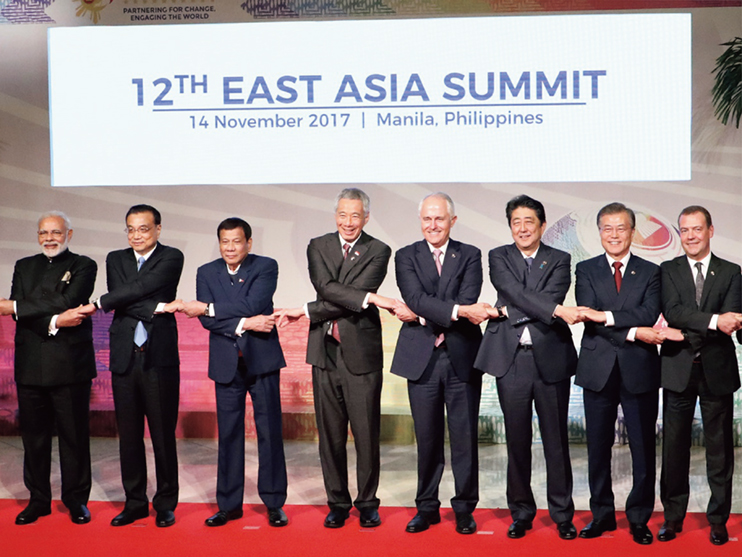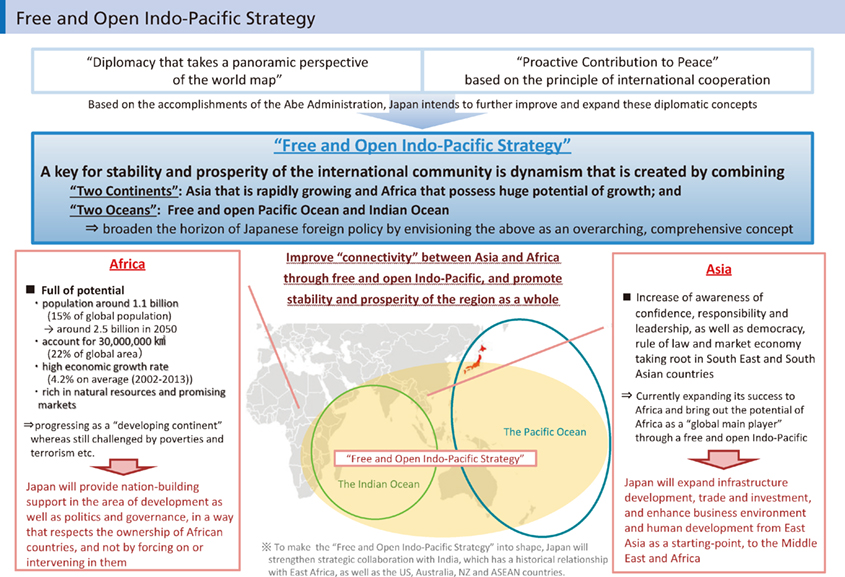Part I International Cooperation for Peace, Stability and Prosperity of the International Community

Prime Minister Shinzo Abe and Leaders of States of the respective countries at the East Asia Summit (EAS) held in Manila, Philippines, in November 2017 (Photo: Cabinet Public Relations Office)
Chapter 1 Dynamism Created by combining “Two Continents” and “Two Oceans”

Prime Minister Shinzo Abe on a visit to India in September 2017, attends the groundbreaking ceremony for the Mumbai-Ahmedabad High Speed Railway (MAHSR) Project with Prime Minister Modi of India. (Photo: Cabinet Public Relations Office)
Under the “Free and Open Indo-Pacific Strategy” announced by Prime Minister Abe at the Sixth Tokyo International Conference on African Development (TICAD VI), held in Kenya in 2016, Japan strategically utilizes ODA to contribute actively to the peace, stability and prosperity of the international community.
Section 1 Free and Open Indo-Pacific Strategy
A free and open maritime order based on the rule of law is the foundation for stability and prosperity of the international community. In particular, the Indo-Pacific region, which stretches from the Asia-Pacific through the Indian Ocean to the Middle East and Africa, is the core of the world's vitality, supporting more than half the world's population. It holds great potential to become an engine to drive the growth of the global economy.
It is of Japan's view that the dynamism created by combining “two continents” - Asia, which is recording remarkable growth, and Africa, which is full of potential - and the “two oceans” of the Pacific and Indian Oceans hold the key to the stability and prosperity of the international community. Based on this idea, Japan has been promoting the “Free and Open Indo-Pacific Strategy,” which aims to maintain and strengthen a free and open maritime order based on the rule of law across the Indo-Pacific region, in order to make the region “international public goods” that equally brings stability and prosperity to all countries in the region.
More specifically, Japan is moving forward on the actualization of this strategy by advancing its efforts on three pillars: (i) the promotion and establishment of the rule of law, freedom of navigation, and free trade; (ii) the pursuit of economic prosperity through enhancing connectivity, including through “quality infrastructure” development in accordance with international standards; and (iii) initiatives for ensuring peace and stability that include assistance for capacity building on maritime law enforcement, anti-piracy and disaster risk reduction.

